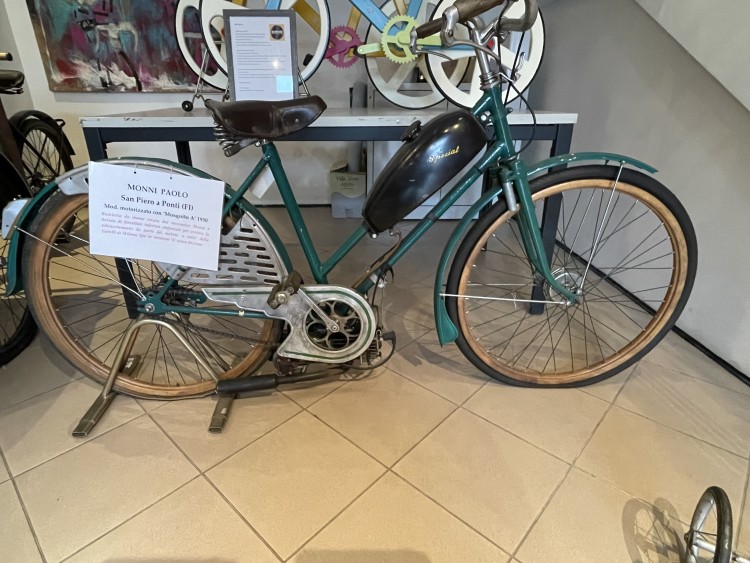 DIDA
Browse
How it works
Insert your collection
News
Contacts us
DIDA
Browse
How it works
Insert your collection
News
Contacts us
Type:
Room: Bicicletta

Description
The idea of designing a bicycle auxiliary engine came to Milanese engineer Carlo Albero Gilardi in the mid-1930s, when he was forced to travel long distances by bicycle, burdened by his toolbox, to perform maintenance or repair work on industrial machinery traded by his father. A graduate of the Istituto Tecnico Giacomo Feltrinelli Technical Institute, he had gone on to earn a degree in engineering, studying as a private student, at the Technical College in Freiburg. In September 1945 the prototype was applied to a touring bicycle and was tested severely by the designer himself, over long distances; the same distances he had ridden ten years earlier on a bicycle, loaded with tools. In two months he traveled more than 15,000 km, making a myriad of different minor modifications and calibrations between trips. In early 1946 the auxiliary engine went on sale under the trade name "Mosquito," an English version of the nickname "mosquito," given to it by Garelli workers because of its low running noise. It was so successful that the distribution situation became untenable. Even in the first months of production, the Sesto San Giovanni factory was besieged by dealers from halfway across Italy who would pick up the engines as soon as they left the assembly department. The company managed to churn out just over 100 pieces a day, barely enough to cover the Lombardy market, but the "Mosquitos" were in demand throughout the country, not to mention the numerous orders that were beginning to arrive from Europe and beyond. It became necessary to build a new plant in Naples and, likewise, to award concessions for construction under license in various foreign countries. The "Mosquito" was built in Spain, France, England, Argentina and even beyond the curtain in Hungary, where it was renamed "Dongo" (rocking) because of the slight longitudinal sway of the engine, c
Photo and Text Credits:
More artworks in Bicicletta
If you are not at the museum click on the link below and you can test our guide by framing some works directly on the DEMO page.

If you are near the museum you can reach it and by framing with your mobile you can discover the audio guide.
